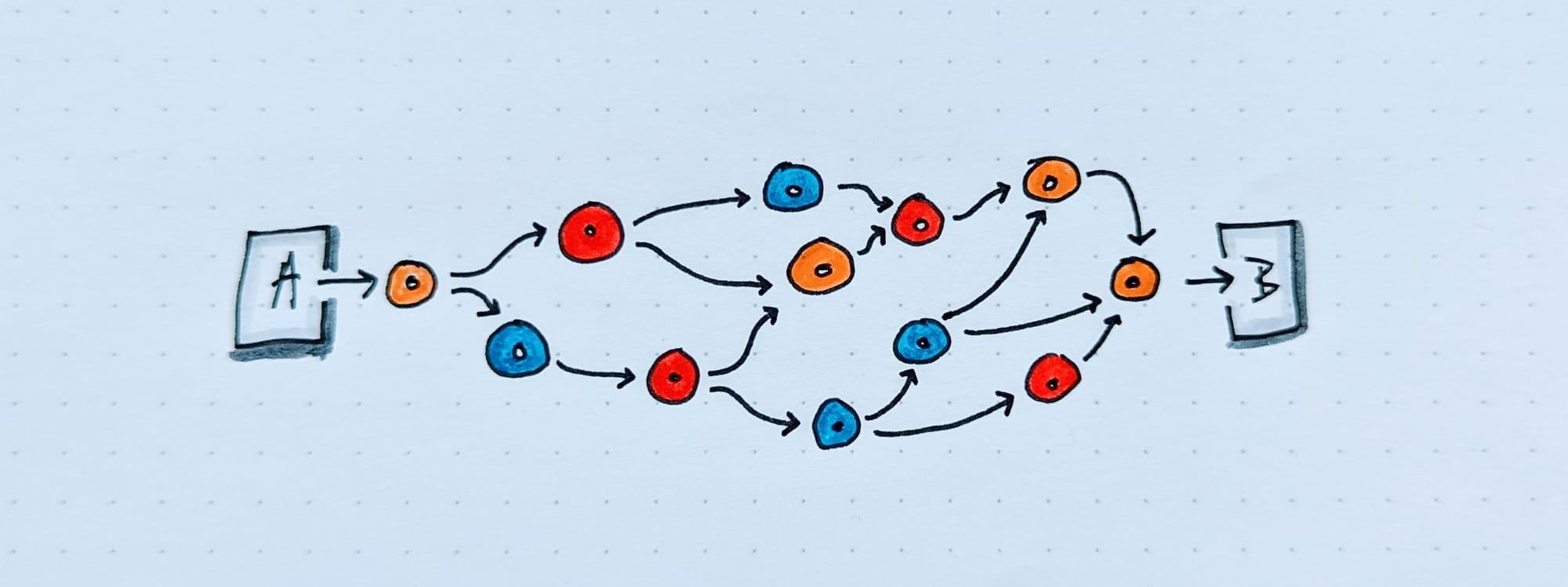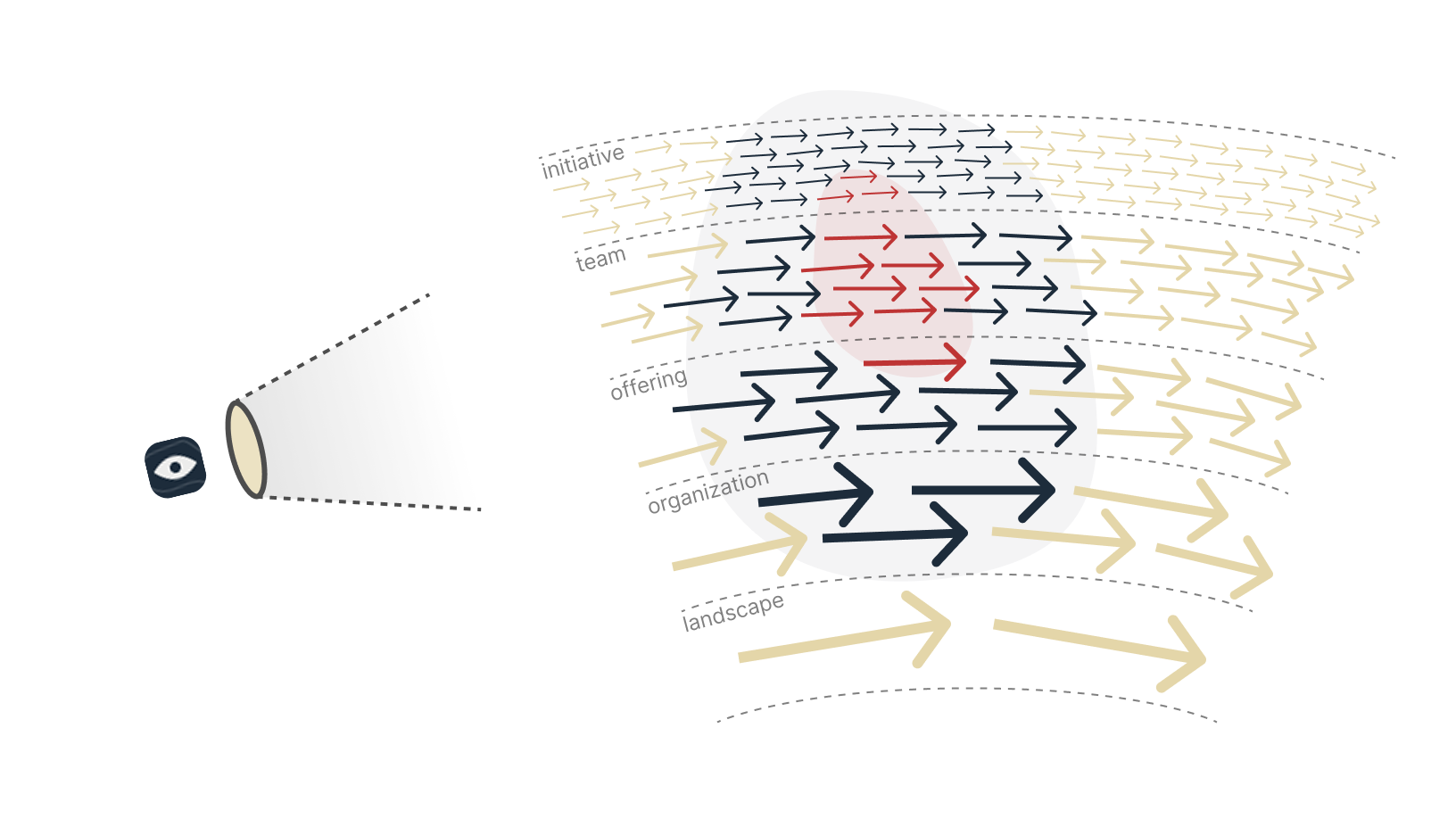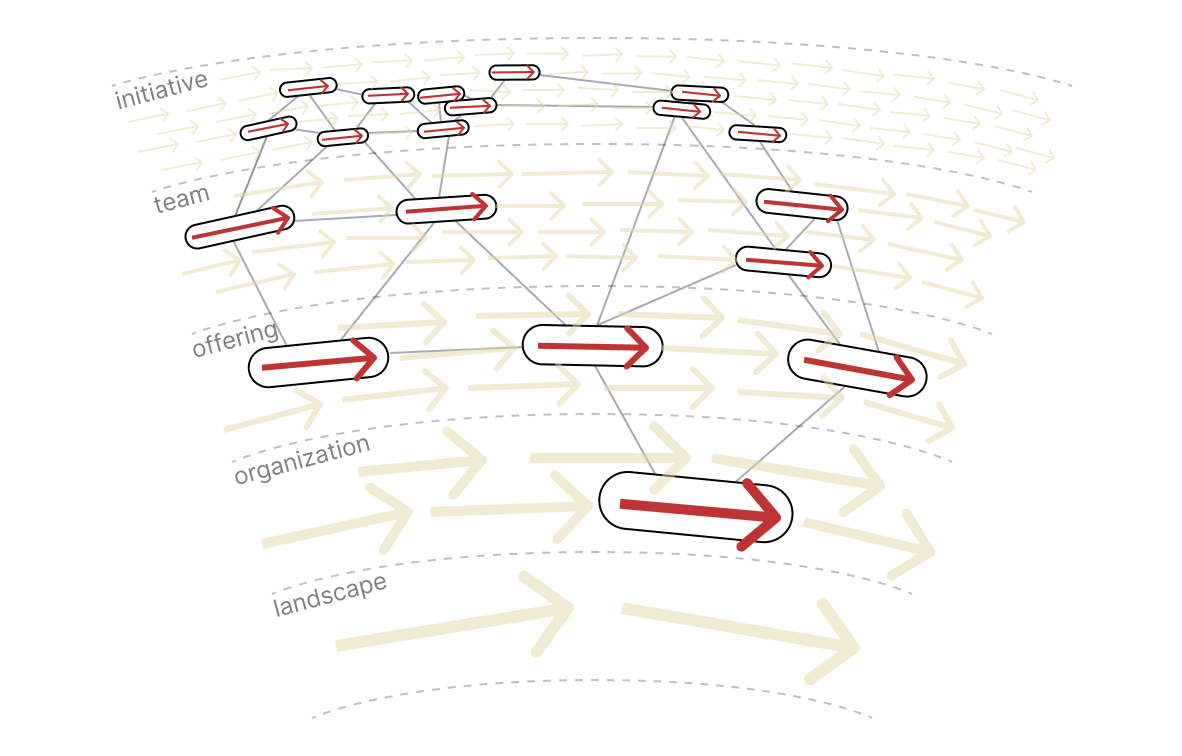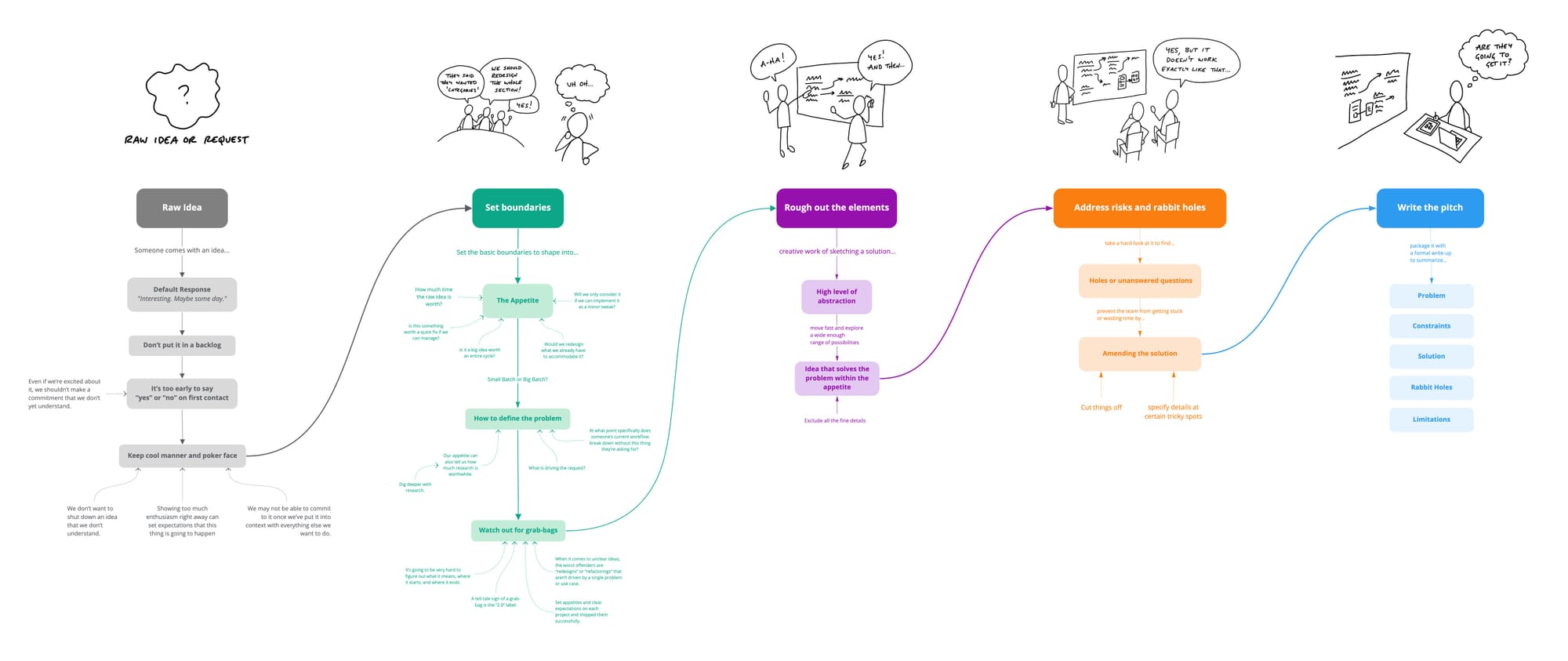Sequence over process
Last year in Process vs. Sequence [LC02], I argued against generic and functional process models, in favor of understanding the sequence of steps that constitute the work. "One skill that a product team must have, collectively, is moving from A to B successfully and efficiently.” If so, then the design thinking process or the double diamond of design (for example) speak to a function-specific progression, but don’t speak to our larger aim of building things well together.
The constructive view of process is sequence: the set of specific steps or key decision-points we take to shape the work from idea until its built reality.

Incorporating levels of scale
Last week, in Scope of Awareness and Control [LC22], I reframed “strategic levels of scale” as levels of organizational activity, inspired by Stewart Brand’s pace layering.
Our five levels — initiative, team, offering, organization, ecosystem — move from small, fast, and light (up top) to large, slow, and heavy (down low).

These are levels of scale that describe organizational activity. Those activities are simultaneous, parallel, ongoing, interdependent, and interconnected. One of the key points from last week was that we’ll never be able to see all that’s happening, and we can affect or control even less of it.
Sequence and scale – together
Now we combine the two views: the sequence of steps from A to B that generate our work, and the levels of scale describing the weight and speed of different activities.
Imagine a small project driven by one team in the organization, shown below.

Seeing through sequence and scale, we anticipate the slow activities that a faster level must align with. We can see how the fine-grained texture of fast activities are not appreciable on the slower levels. We can discuss the tradeoffs of skip-level observation, consider what our recurring rituals do to the pace of work, and evaluate the timing of our communication and planning cycles.
Sequence and scale are crucial, and this is not limited to any single stream of effort. Whatever effort we examine is merely one possible foreground, woven into and out of all the background of every other activity recurring up and down the levels of scale.
There's a lot beneath the surface of this picture, especially in terms of the interfaces and interactions between the levels.
One thing of note:
- Here's an interesting visualization Shape Up, from the Shape Up Forum: I think it does a nice job of speaking to the sequence of decisions that must be made for a given shape.

Until next time—
This is Loops and Cycles, a mailing list exploring how we work together and make good things.


![Sequence and Scale [LC23]](/content/images/size/w100/2025/05/sequence-and-scale_v2-2.png)
